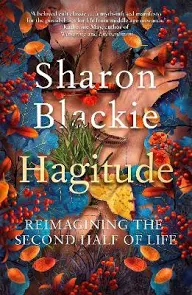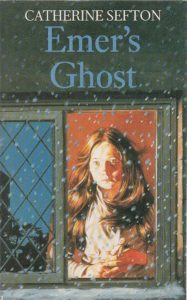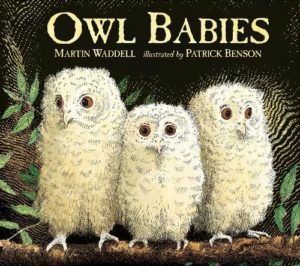 There can be a perverse pleasure, as well as a sense of rightness and beauty, in insisting on flowering just when the world expects you to become quiet and diminish.
There can be a perverse pleasure, as well as a sense of rightness and beauty, in insisting on flowering just when the world expects you to become quiet and diminish.
I got a lot of joy out of Hagitude: Reimagining the Second Half of Life by Sharon Blackie. So much to like. Fairy tales and folk tales of the British Isles. Myths and Jungian archetypes, psychology and magic. Gorgeous descriptions of the natural world. Just enough of the personal to make sense of the writer’s energy and courage, but not so much that it was all about her (though I am keen to get hold of her other, more autobiographical book If Women Rose Rooted). Inspiring images of elder-women as wise, passionate, nurturing, angry, fierce and/or bloody scary. Now that I am properly old, I feel an inner hag looking out through my eyes more and more often. Makes me wonder what are the possibilities for my remaining twenty-odd years.
 I felt uneasy.
I felt uneasy.
I lay in bed watching the wooden doll watching me.
I knew that she was just a doll, of course. She was only three or four inches high, rounded, like a small milk bottle, with her chubby arms…or what was left of them…gathered across her chest. She had weathered badly. All the sharp bits of her, like her ears and nose, were worn almost smooth, and there was a bad crack across her back, but she was still a doll.
The thing is, she kept looking at me…
I touched her, ran my finger down the stump of her nose, and then I had one of the worst shocks of my whole life.
When I drew my finger back from her face, it was damp.
The wooden doll had been crying.
Whenever I’m in the Op Shop and see British junior fiction with a slightly supernatural bent, I snap it up. Emer’s Ghost (1981) is my latest find. It’s a tight (as in short, with only 137 well-spaced, larger print pages) but wholly satisfying book. Emer finds a little doll buried in a ditch, and begins to see a ghostly child, a little ragged girl. What does she want Emer to do? Against the background of school, family life and the minor dramas of a small Northern Irish village, Emer and her sister Breige solve the mystery.
I was impressed with the way the author weaves Irish religion, politics and history into a children’s novel in such a compelling and (a phrase I don’t like, but it works here) age-appropriate way. In the story, Emer’s village houses the ruins of a church burned to the ground by Cromwell’s soldiers; this is based on the real-life Massacre of Drogheda in 1649, where St Peter’s church was deliberately set alight, killing all those inside. On the more cheery side of things, Emer and her siblings, their tired and overworked mother, the nuns, the local eccentric, the egg-smuggling shopkeeper and other local characters are believable and fresh, and the historical tragedy does not weight the story towards gloom and nightmares.
Reading is such a pleasure when you’re in the hands of a good writer!
About the author: Martin Waddell has written over a hundred children’s books. And he’s winner of the Hans Christian Andersen medal. I must have personally sold hundreds of copies of Owl Babies over the years I worked as a bookseller. But I didn’t know that he is also Catherine Sefton! I’ll be looking out for more.

